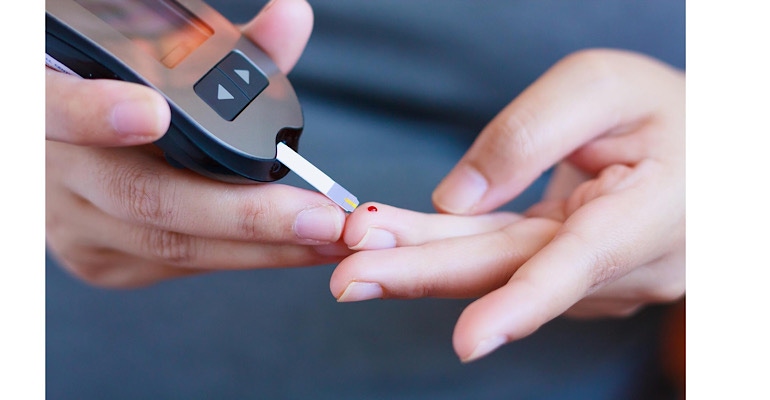Don’t Leave Patients Out in the Design Process of Distance Care Devices
In the design process it is imperative to focus on benefits to end-users.
May 25, 2022

User-centered design is critical when developing new medical devices to support distance care. These medical devices are specifically designed for patient use outside of clinical settings and have been greatly enabled with digital technologies and ingenious features that provide benefits to both providers and payers. However, in the design process, it is imperative to focus on benefits to end-users. This means consideration of environmental factors, including designing for the elderly, infirm, or other inexperienced users. It may also include issues such as increased battery life, fall detection, and other risk-mitigating sensors, including innovative applications to trigger emergency responses.
Smart devices have gained traction with apps that track fitness goals and basic statistics, which has made patient acceptance more prevalent. This trend simplifies the introduction of devices to enable more complex diagnostics and therapeutic self-care options. Today, these connected technologies can now provide even better mechanisms for drug delivery and a safer, more convenient way for patients to receive their meds.
A Qualitative Approach to User-Centered Design
User-centered design methodologies look for confirmatory patterns to emerge to identify potential design innovations and issues for resolution. To optimize these opportunities to provide unmet needs, iterative usability testing should be incorporated.
User studies enable the designer to identify any potential challenges for patient end-users. The following should be considered:
Potential user personalities and their specific needs
Demographics (including the size of the user and economic variations)
Psychographics and cultural differences
Environments (the device likely will not be in an aseptic environment)
Potential or actual comorbidities
Discretion (to blend in with the environment or if wearable, on their attire)
Device designers also need to identify how the device will be packaged and handled before it gets to the end-user. For example, temperature and humidity control may be a consideration. Questions regarding shelf life, long-term storage needs, as well as management of biohazardous materials, need to be answered and supported
The Evolution of Distance Care
The prevalence of patient-operated healthcare has become commonly known as “distance care.” It includes all categories associated with this market segment, including wearable and in-home devices for real-time monitoring, pain management, and chronic drug delivery. Many of these devices feature secure data collection and transfer to professional healthcare providers for oversight and interaction. They may also incorporate sophisticated embedded intelligence to simplify operator interactions while delivering vital data to remote databanks for analysis and functional optimization. This minimizes the operational burden on patients who may suffer from multiple comorbidities that limit their cognitive and physical capabilities.
Miniaturization and simple interactions such as voice and gesture controls further enhance patient lifestyles. Modern wearables and portable devices are also being styled to blend with the patient’s attire and they often resemble consumer appliances and entertainment products. Many devices interact with smartphones thus leveraging available computer processing, photographic, and telemetric technology, reducing the capital cost of distance care. Portable and wearable device designs benefit from modern low-power electronics and dense battery chemistries that provide hours of continuous operation within smaller, lighter configurations.
Usability Requirements
With the patient-as-operator, device manufacturers must address significant usability requirements that have not been historically relevant with clinician-operated devices. The breadth of demographic and psychographic variation among patients is massive compared to highly trained healthcare professionals. As such, these devices present a slew of design challenges to overcome interaction limitations. Eyesight, dexterity, strength, cognitive deterioration, and social/cultural/anthropomorphic variability conspire to complicate operability and use safety.
Product Workflows
The entire work/lifecycle for these devices must be considered by the design teams. Drug-delivery combination products that transport the drug from its point of manufacture to the patient may require specific environmental and physical conditions to be maintained to preserve the drug during transport. For example, if a specimen sample is required from the patient, what is necessary to preserve the sample from the patient to its end destination? Packaging and environmental specifications (shock, vibration, material leaching, climate control) must be well constructed as part of the design brief and ideally should not complicate the end-user burden.
A common scenario in this category is the administration and management of insulin delivery to diabetic patients. Both chronic and critical, it is necessary for drug delivery to be accurate by volume and timely in delivery to meet shelf-life limitations. Real-time blood glucose measurement is necessary to calculate the optimal insulin bolus. Until recently patients were required to draw their blood and test for current sugar levels multiple times a day, which could cause multiple-use errors and potential hazardous outcomes. Continuous blood glucose monitoring is now a stable and mature technology that, when coupled with wearable insulin (and glucagon) delivery pumps (artificial pancreas), substantially reduces the workflow burden to the patient. These semi-automated systems provide greatly improved therapy and outcomes for the millions of patients that suffer from this chronic disease.
Authentication and User Identification
There is also a growing need for these devices to ensure appropriate operational compliance and adherence by the patient to support efficacy and safety and reimbursement requirements. Authentication measures are important to document correct practices and to require that devices and the recording methods are interacting reliably.
Is the patient using the device at all – or as often and in the right way as they should be? User identification can also be necessary and is often a large part of reimbursement. Device designers can also consider utilizing a smartphone, camera, or video recording to ensure correct usability. Finally, therapy monitoring with time, data, bolus quality, and/or anatomical placement is important.
A vaccine delivery device may be required by governing authorities to prove that it was administered correctly to the actual patient on an actual date. One method of providing this authentication is to utilize a software application on a smartphone that can record the process and QR codes for batch recognition via video with a date-stamp. The information can be uploaded autonomously to a database for verification and traceability. This may require the device to provide visual markers or electronic sensing to the smartphone app to verify that certain actions have been successfully completed. Tamper-resistant packaging may also be required to ensure the contents are consistent with the QR code database and/or that the sample collection has not been compromised during transit.
Distance Care Is Transforming Procedural Paradigms
Advancements in device and sensor technology, telemetry, cyber-security, and data processing will enable distance care to transform healthcare procedural paradigms over the next decade. Patients as device operators will continue to mature in their familiarity and acceptance of technology in their everyday lives. This will propagate higher levels of device and functional capability. However, usability requirements for these self-administered devices are vastly more challenging than traditional clinical-use devices and require thorough user-centered design methodologies to maximize patient safety and effective use. Reliable authentication techniques will be a requirement as critical drug delivery and sample collection become widely adopted by society.
With dwindling resources willing to train as future clinicians to care for an ever-aging population, it is logical that we as patients will need to become more involved in our healthcare. Artificial intelligence coupled with massive online biostatistical data will inform these connected patient-operated devices to make optimized and safe real-time decisions with little end-user involvement in the comfort of our homes and as part of our everyday lives.
About the Author(s)
You May Also Like



